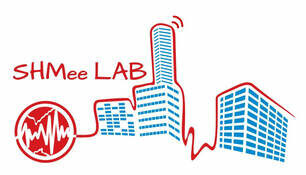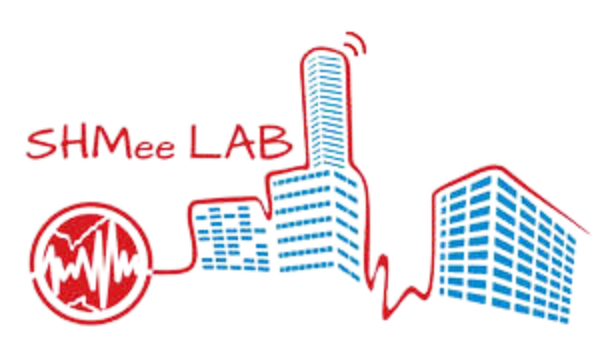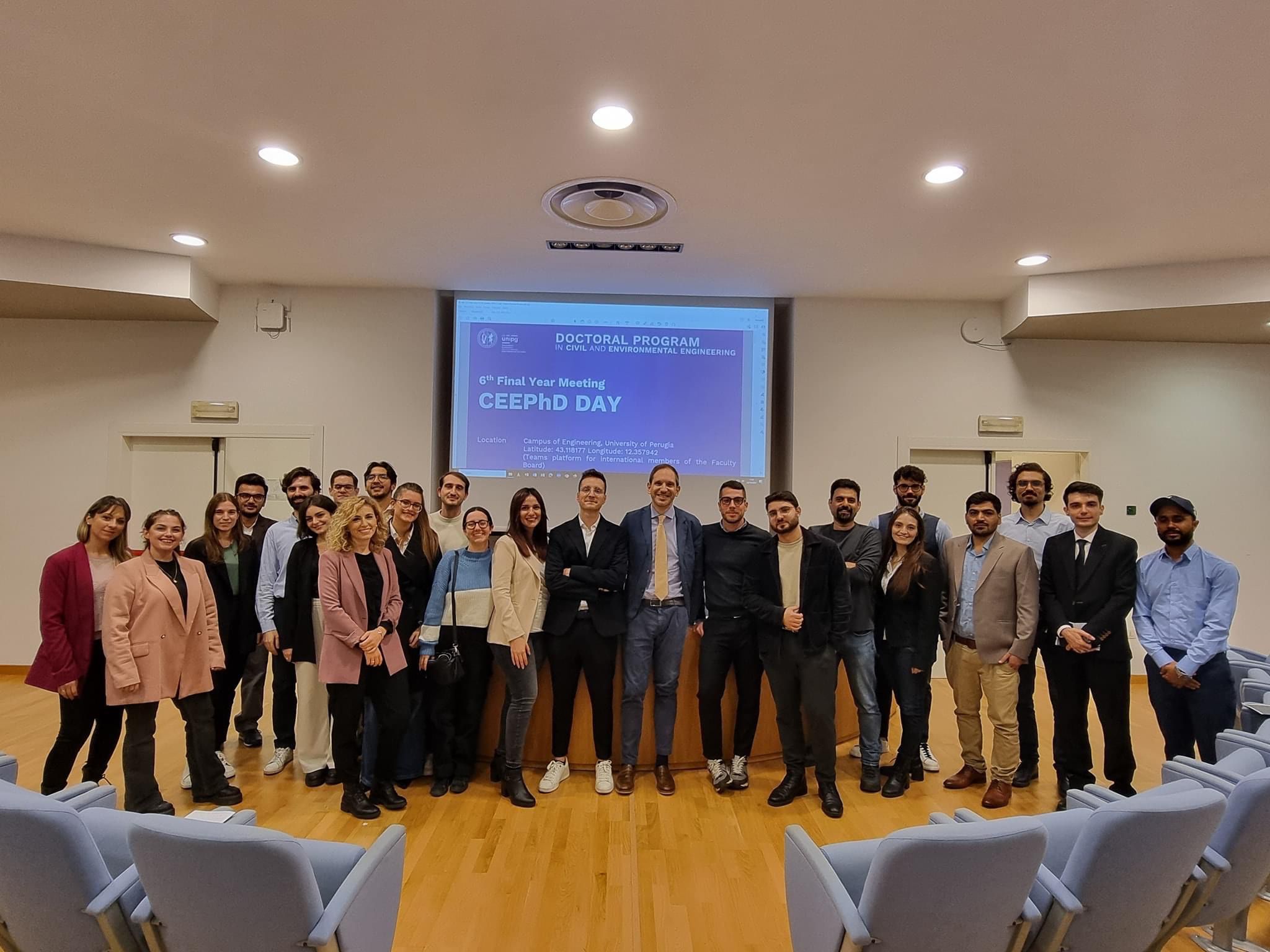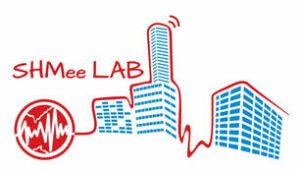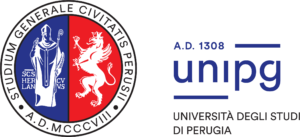Ph. D. Theses
Transfer Learning approaches for structural health monitoring of roadway bridges
Dr. Valentina Giglioni - 2023
International Doctoral Program in Civil and Environmental Engineering - XXXVI Cycle; University of Perugia
Read more
In order to provide a more accurate view about the current state of a bridge structure, as well as to facilitate the decision-making process aiming at a correct maintenance, this research project aimed at synergistically integrating data-driven and physics-based approaches in SHM of bridges, so that their merits get preserved and their shortcomings become less critical. By exploiting the combined use of both techniques, the goal would be to accomplish damage detection, localization and quantification and, besides this, to make future prediction about structure’s health. Furthermore, due to the unavoidable presence of uncertainties associated to monitoring results, the evaluation of the errors is addressed by means of statistical tools, in order to get reliable and more accurate outcomes in view of a proper structure management.
Dr. Elisabetta Farneti - 2023
International Doctoral Program in Civil and Environmental Engineering - XXXVI Cycle; University of Perugia
Read more
The main goal of the research is to develop an innovative strategy that combines structural and collapse analysis performed through numerical modeling with an SHM satellite remote sensing technique based on InSAR analysis. In particular, the idea is to use advanced computational techniques (based on FEM and AEM) to simulate the progressive collapse of structures for which SAR data are available, in order to interpret from a structural point of view the results of InSAR analysis. The study of progressive collapse allows identifying the most critical structural elements, which failure could generate a local or global collapse. On the other hand, InSAR technology allows to follow the temporal evolution of slow deformations affecting the structure. Through the interaction between numerical analysis and structural monitoring performed by InSAR technique, we want to understand if the measured displacements indicate a progression towards a critical condition for the structure, and if anomalies in deformation trends have to be considered dangerous or not, in order to effectively anticipate failure conditions associated to slow structural movements. A procedure to automatically extract as much information as possible from SAR data will be developed, in order to detect potential structural instabilities. This method also serves the purpose to identify the parts of the structure where to concentrate in-situ sensors and to trigger in-situ inspections, with clear benefits in terms of both time and resource management. In the application to multi-span bridges, a new methodology for the analysis and interpretation of SAR data will be proposed, with the aim of automatically detecting any deviation with respect to a configuration that is considered as stable.
3D Modeling of Soil-Structure Interaction for Seismically Loaded Bridge Piers Founded on Caissons
Dr. Davide Pauselli - 2023
International Doctoral Program in Civil and Environmental Engineering - XXXVI Cycle; University of Perugia
Read more
A proper evaluation of the static and seismic response of a bridge can strongly depend on a proper schematization of the soil-structure interaction phenomenon. The general purpose of this PHD thesis is the critical analysis of the main SSI numerical/analytical schematization techniques applied to real bridge case on caisson foundation, pointing out pros and cons both in static and seismic conditions, making a comparison between classic and simple approaches and more complex ones and analyzing different conditions (homogeneous vs stratified soil, different kind of topography). The final goal is also proposing simplified but rigorous approaches to help designers to understand the relevance of SSI effects for caisson foundations. Chapter 2 of the thesis addresses several key aspects of soil-structure interaction. It delves into the general issues related to this interaction, highlighting the specific aspects that pertain to caisson foundations. The chapter also examines the analysis methods that are commonly employed in both academic literature and professional practice. Furthermore, it presents the outcomes obtained and offers insights gleaned from the global body of literature on this subject.
Chapter 3 analyzes an ideal problem definition, inspired by a real case study, to provide a further contribution to knowledge by studying a specific case of a stocky caisson foundation of a bridge pier resting on a relatively stiff soil layer. The chapter explores the relevance of Soil-Structure Interaction (SSI) when the structure is subjected to different seismic forces.
The seismic behavior of the bridge pier founded on a caisson is analyzed through finite element analysis (FEM) conducted in the time domain, considering effective stresses. The soil is modeled as an elasto-plasticmedium to account for variations in shear strength and stiffness of the foundation soils under dynamic conditions. Additionally, the model incorporates energy dissipation through hysteresis. The aim is to evaluate the effects on the bridge pier-foundation-soil system in terms of maximum and residual displacements and rotations. These findings are then juxtaposed with those obtained from a simplified model, where the bridge pier is considered fixed at its base, thus neglecting the influence of SSI. In Chapter 4, a prototype case is presented to showcase the outcomes of dynamic time-domain finite element analysis (FEM) in terms of effective stresses. This analysis encompasses a range of recurring and complex geometric and topographic scenarios in viaducts, with the goal of comprehending the impact on the system's response across all three spatial dimensions. Specifically, three configurations are examined:
• A configuration in which there is a topographic hollow in the central area of the viaduct. Three cases with different convergence slopes of 10°,15°,20° were studied.
• A configuration in which there is a slope in the transverse direction of the viaduct. Again, three slope values were considered: 10°, 15°, 20°.
• A configuration of reduced deck spans. Three mutual pile distances of 15m, 20m and 30m were analyzed.
A simplified method of evaluating the soil-structure interaction of piers founded on caissons is proposed in Chapter 5. A comparison between the results obtained from incremental pseudo static analysis using a nonlinear dynamic FE analysis with those obtained from an Extended Winkler (EW) approach is presented, in terms of maximum and residual displacements and rotations. The EW approach was inspired by a previous studies (Taciroglu et al., 2006 ; Gupta, 2020) on an EW framework for deep flexible foundations on clay, which motivated the development of a similar approach for rigid foundations. This, though simple, considers the real geotechnical and structural characteristics of the case study by employing a straightforward Matlab script and accounting for the elastoplastic behavior of the soil. The comparison of the EW and FE models considers a rectangular bridge pier supported by a circular caisson foundation, inspired by a real structure, studied under different stratigraphical configurations. This is analyzed under pseudo-static conditions, by applying a monotonically increasing load.
The objectives of the thesis are therefore:
1. To analyze a case study that in professional practice is typically traced back to a fixed-based superstructure (neglecting the SSI effects) by demonstrating instead that the effects of soil-structure interaction cannot be neglected and are decisive both in the dynamic characterization of the bridge-pile-foundation-soil system and in the evaluation of superstructure stresses, displacements and rotations.
2. To make a contribution to literature parametric studies by analyzing recurring geometric and topographic configurations for viaducts such as those of topographic hollows, of even significant slopes, and closely spaced foundations.
3. To propose a user-friendly methodology for the pre-dimensioning and assessment of caisson-founded piers and for interpreting the results of dynamic identification campaigns.
Online damage identification of structures via continuous in-operation ambient vibration monitoring
Dr. Enrique Garcìa-Macìas - 2022
International Doctoral Program in Civil and Environmental Engineering - XXXV Cycle; University of Perugia
Read more
Development and application of composite pavements with nano and micro carbon inclusions for bridge weigh-in-motion sensing
Dr. Hasan Börke Birgin - 2022
PhD in energy and development sustainable development - XXXIV Cycle; University of Perugia
Read more
Road-infrastructures like bridges and viaducts are vital elements of urban life. During their service time, they are continuously exposed to traffic loads of varying magnitudes. Currently, the service life projection of the road infrastructures is carried out by evaluating structural conditions and employing traffic load models. However, the presence of overloaded trucks in the traffic increases the possibility of failures on the remaining service life. Consequently, the over-estimated lifetime of road-infrastructures may lead to catastrophic events that endanger human life. A better evaluation can be carried out by instrumenting the road infrastructures with traffic sensors. Although the health monitoring of buildings and infrastructures during their service lives and after catastrophic events is an increasingly timely topic, on the practice, limited amounts of bridges or viaducts are being monitored for the traffic. As a matter of fact, off-the-shelf technologies are demanding in terms of cost and labor to maintain a continuous operation under various environmental conditions. In addition, road infrastructures are likely to be located out of cities. Thus, creating a situation where it is hard to utilize monitoring systems based on traditional sensor technologies. Moreover, on the structures, external applications only allow traditional sensors to be put in a limited number of locations, reducing their durability and reliability. Self sensing smart materials are potential solutions for lowering the equipment costs necessary for continuous monitoring of road infrastructures by converting roadways into multifunctional elements capable of self-sensing. The broad deployment of sensing pavement-based traffic monitoring systems for structural health monitoring of road infrastructures is a significant step toward future smart cities, allowing efficient policy-making for sustainable development and maintenance, as well as supporting quick decision-making in times of unforeseen events. This thesis investigates the behavior of smart pavements from small scale, to real application in the field. The thesis also presents the development of the novel algorithm for WIM characterization done by smart materials, design and production of cementitious and asphalt like polymer composite smart materials, and creation of a WIM sensing system including both hardware and software components. The results of field tests point out the numerous capabilities and benefits of the newly developed sensing system and support the potential of this system to be a licensed engineering solution.
Life cycle cost analysis of road bridges equipped with structural health monitoring systems
Dr. Michela Torti - 2022
International Doctorate in Civil and Environmental Engineering - XXXIV Cycle; Curriculum: Construction Design, Verification and Control; University of Florence and University of Perugia
Read more
The research project is included in the overall context of the quantification of the performance of the monitoring system of the bridge in the life cycle cost perspective. Although the merits of reliable and well-established monitoring systems are recognized and their implementation is sometimes considered highly desirable, the scepticism regarding the extra costs that a system may entail overcomes the rationale of "to prevent is better than to cure" concept. As described above, some multiple studies and applications showed the long-term benefits that the implementation and use of a monitoring system and its data can produce. However, a general methodology and application tool for the critical analysis of the structure-monitoring system able to quantify extra costs, advantages and to weigh them based on the input conditions is not available yet. The present work aims to fill this gap in the scientific and management field of bridge structures. In detail, the present work studies the long-term consequences that damage monitoring systems of a mainly predictive approach may trigger. Indeed, since the main goal of a management planning of a bridge structure is to guarantee a safety level higher or equal to the one required for the entire lifetime of the bridge, the attention has been focused on damage detection methodologies in early stages, avoiding the possibility of reaching critical conditions or otherwise below performance limits. In addition, the performance of the monitoring system in the ability to efficiently determine non-critical damage before it becomes visible even with ordinary and routine surveillance is not discussed in this work, as it is out of the scope of the research project. On the other hand, the performance of the system in the proper interpretation of the structural response is taken into account in terms of the reliability of the results. A novel model of life cycle cost analysis of road bridges equipped with monitoring systems and managed by condition-based inspection and maintenance plans is proposed, hereinafter called LCCA-SHM framework. The cost model is composed of a general equation, LCCASHM formulation, where the considered cost items and the assumptions outlining the scheduling in the life cycle phases of the terms are stated, and a general procedure, LCCASHM strategy, where a general description of the steps comprising the procedure allowing the assessment of the expected total cost and thus the application of the equation is provided. In addition, the strategy includes a phase of comparison of the obtained results with the ones of the traditional strategies of the inspection and maintenance management for the same case study. The LCCA-SHM framework has then been characterized by three methodological cases of current interest: (i) the fatigue of metal details of bridge girders due to traffic loads, monitored and managed by means of weigh-in-motion systems (named LCCA-WIM); (ii) the time-dependent degradation of the seismic performance of piers due to corrosion monitored and managed with embedded corrosion sensors (named LCCACS) and (iii) the monitoring of the structural response of piers during seismic events and the management of post-emergency phases, (named LCCA-S2HM). Therefore, the LCCA-SHM formulation and LCCA-SHM strategy are detailed for each case showing the versatility and completeness of the proposed framework. The described methodological cases are applied to illustrative case studies. In the interpretation of the results, since the purpose is to provide a support tool for infrastructure managers, special attention is given to the comparative phase. The extra costs and the economic and safety benefits are contextualized to the input data and sensitivity analyses are proposed in order to provide a critical review of the results.
Smart Bricks for the Post-Earthquake Assessment of Masonry Buildings
Dr. Andrea Meoni - 2021
International Doctorate in Civil and Environmental Engineering - XXXIII Cycle; Curriculum: Construction Design, Verification and Control; University of Florence and University of Perugia
Read more
A wide part of the European built heritage consists of masonry constructions originally designed with very limited if not completely absent earthquake resisting criteria, exposing the structures to possible fragile collapse mechanisms during earthquakes. Therefore, it is evident that the evaluation of the health state of these types of buildings after a seismic event plays a fundamental role in the preservation of human life and the historical and cultural building heritage. Structural Health Monitoring (SHM) systems represent a possible solution to this problem by allowing the assessment of the structural performance of the monitored construction during its service life, even in real-time or rapidly after an earthquake, as well as enabling scheduling of maintenance and retrofitting interventions. Although the usefulness of such systems is widely recognized, their application on masonry constructions is still limited due to practical drawbacks experienced in the use of the off-the-shelf sensing technologies. Recent developments in materials engineering introduced in the field of SHM the use of smart materials obtained by doping traditional construction materials, such as cement-based ones, with conductive fillers capable of improving the electrical and sensing properties of the base matrix, giving to the composite the capability of detecting changes in its strain conditions through the output of specific electrical signals. This Ph.D. thesis extends a similar concept to masonry buildings investigating the innovative smart brick technology, which consists of clay bricks doped with suitable conductive fillers and thus capable of revealing changes in their strain conditions by leveraging on their improved piezoresistive capability, i.e. by varying their electrical outputs accordingly.
The Thesis aims to promote the development of this newly conceived technology by addressing the missing/incomplete aspects in the reference literature, with the main objective of comprehensively designing, producing, and characterizing a reliable smart sensing device suitable for seismic SHM of masonry constructions. The choice of the most suitable conductive filler, the type of electrodes to be used for electrical measurements, the production process, and the sensing principle of the smart bricks are investigated. Furthermore, experiments are carried out to properly characterize the electrical, electromechanical, physical, and mechanical properties of such brick-like sensors. The Thesis also proposes two meaningful full-scale applications of the smart brick technology to demonstrate the effectiveness of the novel sensors in detecting and locating damages developed on masonry constructions, in particular, by focusing the attention on those induced by earthquake loading. Strategies for performing damage detection and localization by processing the measurements from the smart bricks are therefore proposed, while mechanical models are built to reproduce the performed experimental tests with the aim of numerically interpreting the outputs from the novel sensors physically installed within the tested specimens. The obtained results demonstrate that the proposed new formulation of smart bricks can be effectively employed for the post-earthquake assessment of masonry constructions, bringing the technology to a readiness level that is mature for field validation.
Dr. Alban Kita - 2019
International Doctorate in Civil and Environmental Engineering - XXXII Cycle; Curriculum: Construction Design, Verification and Control; University of Florence and University of Perugia
Read more
The main objective of this research work concerned the development and validation of an innovative methodology aimed at the detection, localization and quantification of earthquake-induced damages in historic masonry structures. The proposed methodology, called DORI, is based on the combination of data-driven, as well as innovative model-based methods, addressing the Damage identification based on Operational Modal Analysis (OMA), Rapid surrogate modeling and Incremental Dynamic Analysis (IDA) for Cultural Heritage (CH) masonry buildings subjected to earthquakes. More in detail, the DORI methodology proposes the static-and-dynamic data fusion in the OMA-based damage detection method, and extends it through the introduction and implementation of two independent and complementary innovative model-based methods, for localization and quantification of earthquake-induced damage in permanently monitored historic masonry buildings: the former is a surrogate model-based method, a rapid tool which combines long-term vibration monitoring data (i.e. OMA) and numerical modeling, while the latter is based on non-linear seismic IDA.
An Innovative Framework for Structural Health Monitoring of Long-Span Bridges
Dr. Gabriele Comanducci - 2016
PhD in processes, materials and constructions in civil and environmental engineering and for the protection of the historic-monumental heritage, University of Perugia
Read more
Considering natural frequencies as damage-sensitive features, multivariate statistical analysis are newly applied for monitoring the structural health state of bridges, accounting for the linear and nonlinear correlations between such dynamic features and the environmental and operational conditions. A procedure based on the continuous modal frequencies tracking, Principal Component Analysis and Novelty Detection is proposed. The effectiveness and the capability in damage detection of such technique is tested on the pseudo-experimental response data of an analytical parametric model of suspension bridge with damage in one main cable and subjected to wind loading and changing temperature.
